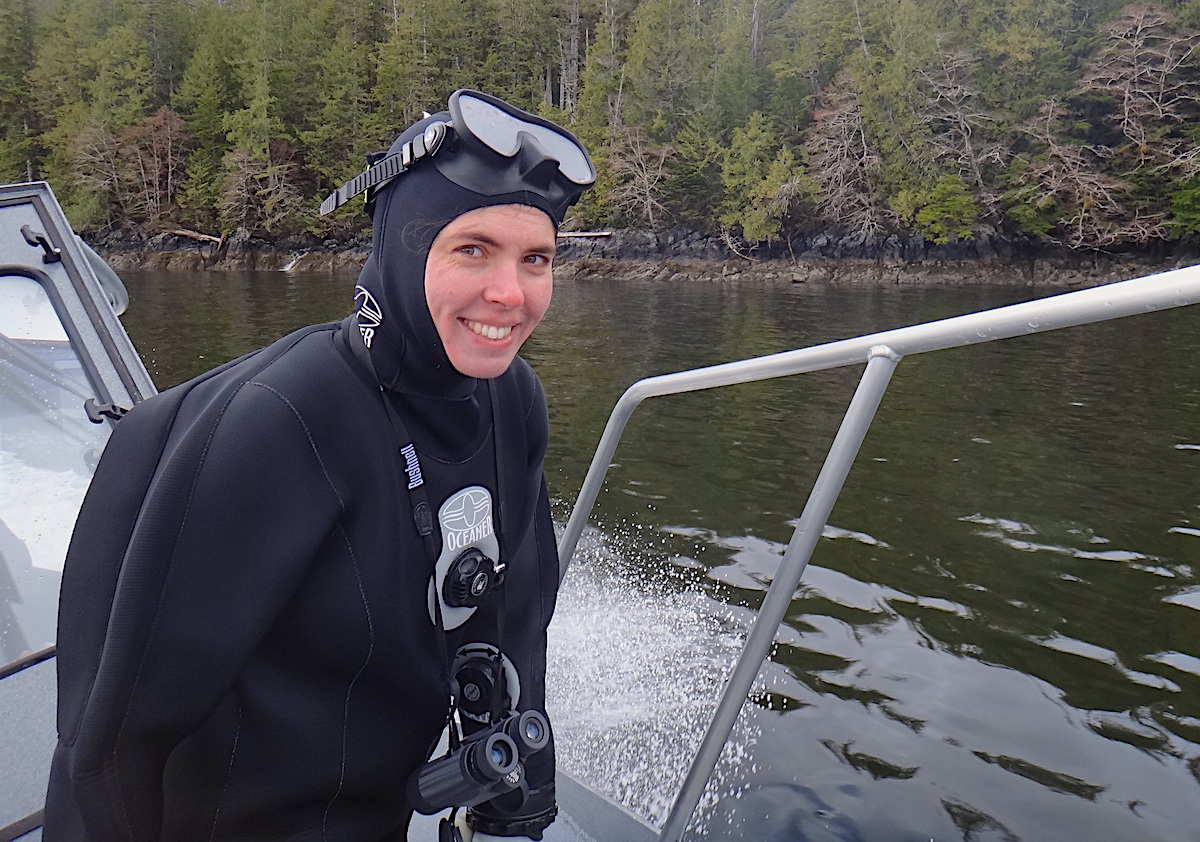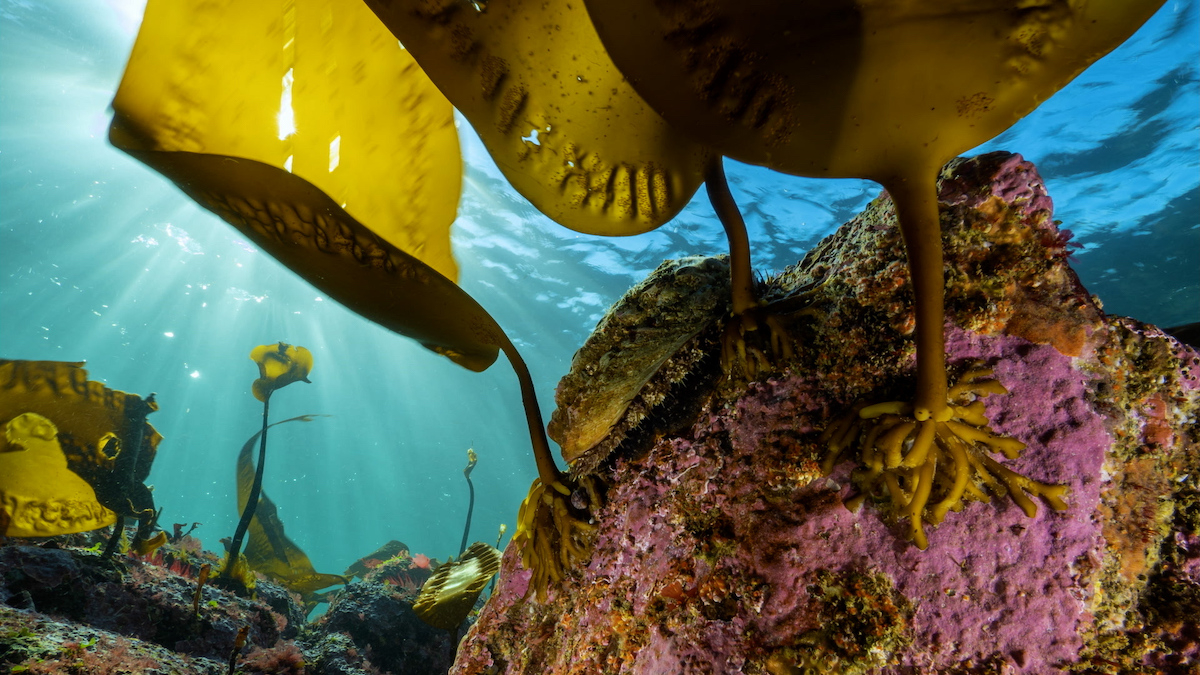Support strong Canadian climate journalism for 2025
Underwater forests represent an average of $500 billion annually in benefits to commercial fisheries, ocean pollution removal and carbon absorption, a new international study shows.
The study is the first to examine the value of kelp’s ocean canopies — found along a third of the world’s shores and on all three of Canada’s coasts, said Canadian co-author Margot Hessing-Lewis, a researcher with the Hakai Institute and the University of British Columbia.
Kelp forests — with a value equal to Sweden’s annual GDP — are worth about three times more than previously thought. The study provides initial baseline estimates, which are highly conservative, Hessing-Lewis said, noting other economic factors, such as the seaweed’s value as a food source, in pharmaceutical or medical applications or for boosting tourism, weren’t evaluated.
Researchers analyzed the distribution of six of the most common kelp forests in eight ocean regions, including fish and seafood surveys, the market value and harvest rates of commercial species as well as the uptake of nitrogen and carbon.
The study helps quantify a growing understanding of the importance of healthy kelp forests beyond their vital role in supporting regional biodiversity, she said.
“These values are really helpful for policy decision-making or a cost-benefit analysis around the restoration or preservation of kelp systems,” Hessing-Lewis said, adding without such economic evaluation, there’s the risk of undervaluing kelp.
As the climate crisis advances, a lot of recent research is focused on kelp forests’ role as a carbon sink, she said. The recent study estimates kelp forests collectively remove at least 4.91 megatonnes of carbon from the planet’s atmosphere each year — the equivalent of Croatia’s annual carbon emissions.
Kelp values for fisheries and pollution greater than carbon sequestration

It is somewhat surprising that kelp’s benefits for fisheries production and the absorption of excess nitrogen and phosphorus in the ocean due to human activity have more significant economic values, Hessing-Lewis noted.
“Everyone is talking about kelp and its role in carbon sequestration, but the potential fisheries yield is actually way higher,” she said. “Even the nutrient filtration piece provides more value to kelp than carbon [services].”
Nitrogen and phosphorus occur naturally, but excess amounts running off the land from fertilizer use, farmed animal waste, sewage or other human pollution find their way to the ocean.
Once there, this “nutrient pollution” acts like fertilizer that can spur the rapid growth of algae — including some types toxic to marine life — which consumes large amounts of oxygen that can also kill animals such as crabs, oysters or fish.
The value of kelp averaged $73,000 per hectare annually for the uptake of nitrogen and $29,000 per hectare in supporting commercial fisheries, the study said.
However, the specific value amounts for the beneficial services varied according to kelp types and the ocean regions studied, Hessing-Lewis noted.

While the B.C. coast features more than 30 different species of kelp, the most dominant kinds of kelp (Laminaria) were studied, including sugar, giant and bull kelp (Saccharina, iMacrocystis and Nereocystis) on North America’s Pacific coast.
Kelp’s highest values for commercial fisheries along the Pacific coast are tied to invertebrates like sea cucumbers, sea urchins and abalone, rather than fish, Hessing-Lewis said.
But overall, the kelp values for fisheries in the Pacific region are significant at the global scale.
“They’re not top-end but mid-range, and even in B.C., the fish value for kelp is quite high.”
Despite the benefits kelp provides, the seaweed forests are withering due to climate change and large marine heat waves on the West Coast in recent years.
Having more information on the economic benefits of kelp will encourage governments and communities to protect or restore important areas and include them in future marine conservation sites so the underwater forests stay resilient as the ocean gets warmer, Hessing-Lewis said.
The research may prompt new marine management, sustainable development and conservation strategies worldwide, like establishing a credit system for offsetting emissions, said lead author Aaron Eger at the University of New South Wales in Australia.
The study isn’t aimed at commodifying kelp forests, Eger said, but highlights the need for more investment in their preservation.
“Putting the dollar value on these systems is an exercise to help us understand one measure of their immense value,” Eger said.
“It’s important to remember these forests also have an intrinsic, historical, cultural and social value in their own right.”
Rochelle Baker / Local Journalism Initiative / Canada’s National Observer






Comments